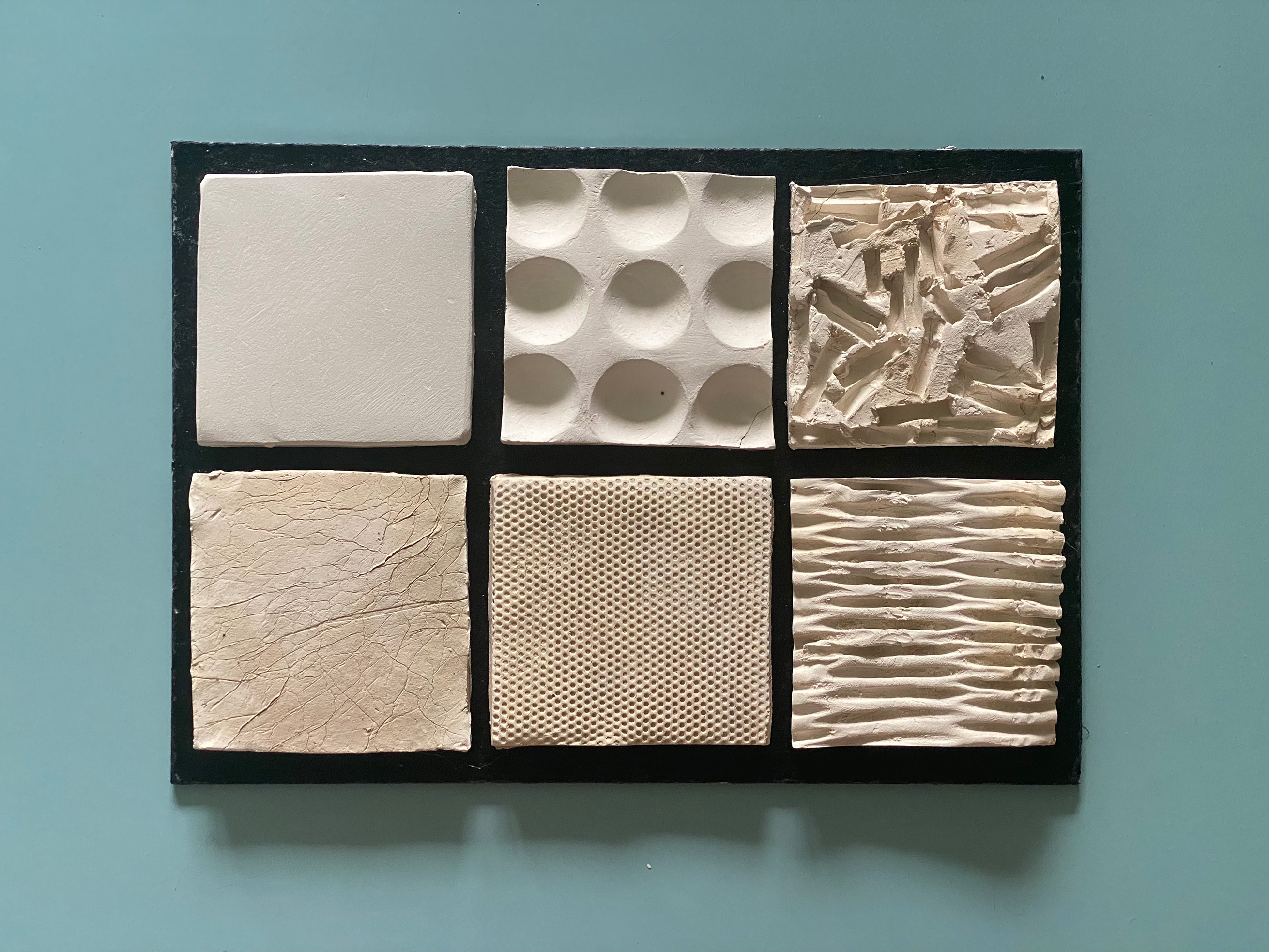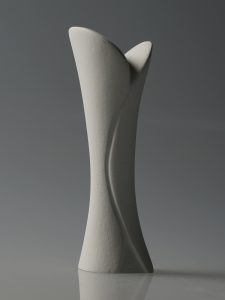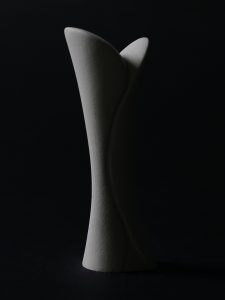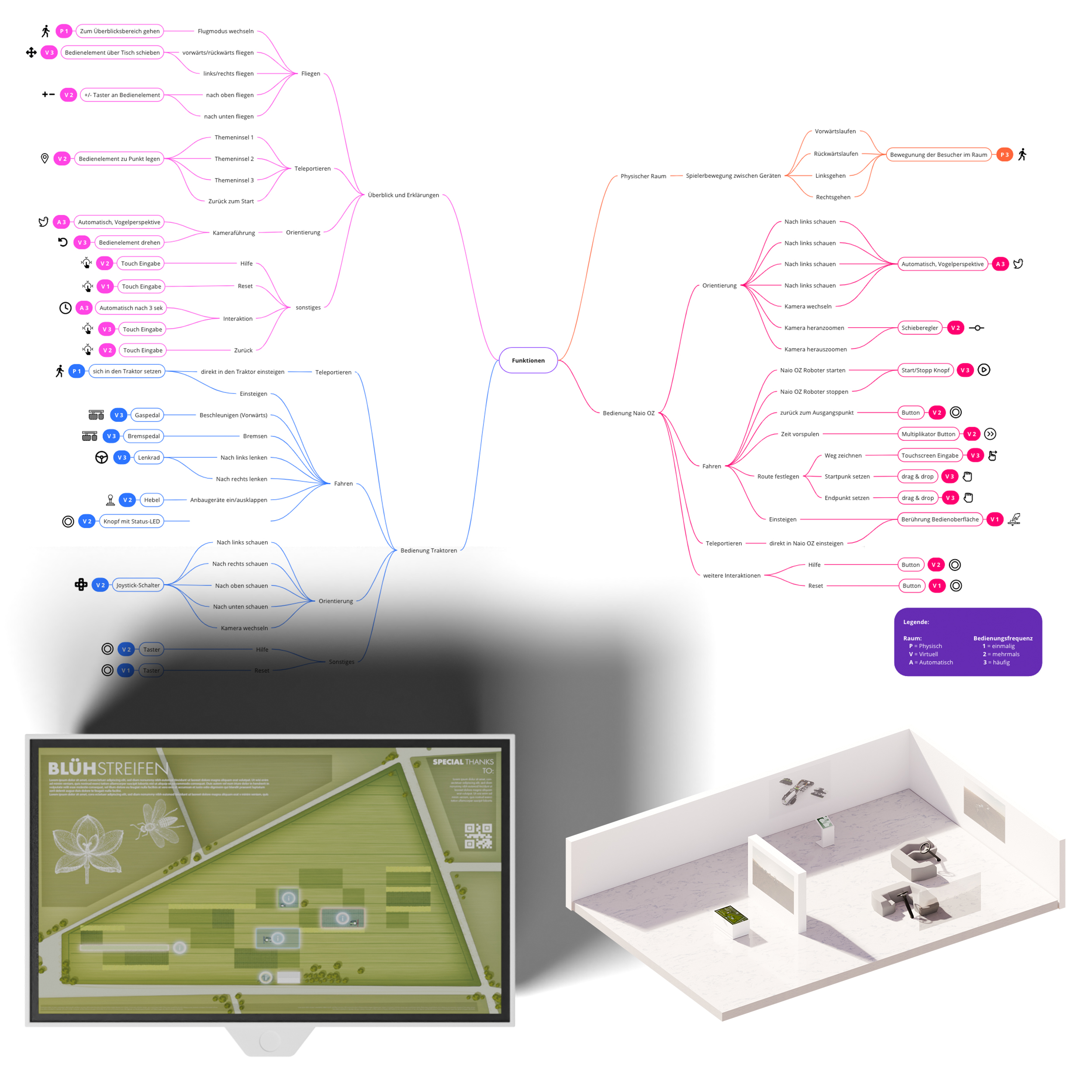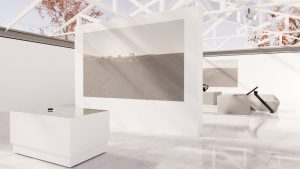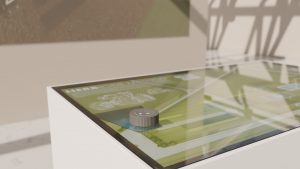Firstly, we looked at surfaces: How can you use the same material to create different surfaces that have a completely different effect on our perception? To explore this, I moulded, decorated and fired over 20 clay tiles.
Another task was to design a plaster sculpture that simultaneously conveys an impression of preciousness and fragility. After numerous trials and experiments, I developed this elongated form in which two delicate petals nestle symbolically against each other, inspired by nature.
The so-called "digi.farming.lab" is a scientific institution in Leipzig that aims to develop new, more sustainable forms of agriculture with the help of a field trial. Among other things, intensive research is being carried out there into herbicides and how they can be avoided. The task was to introduce visitors to the topic of agriculture and herbicides in the context of a museum and to make the work of the "digi.farming.lab" more tangible.
We have created various stations in the museum for this purpose. Firstly, visitors come to an interactive table, a so-called "tangible table". This consists of a large display on which a simplified map of the field trial is shown. By dragging a control element over this map, the virtual camera moves over the field on the screen in front of them. In this way, they can explore the field and the landscape from a bird's eye view without having to be on site themselves. If they place the control element at a location that interests them more closely, the corresponding information is displayed on the table.
There are three fundamentally different types of weed control: mechanical, chemical and autonomous. To try out these different methods, there are three stands in the second part of the museum where visitors can sit in a tractor cab or control the route planning of an autonomous robot. In this way, visitors can playfully experience the different types of weed eradication and compare the individual methods using evaluation criteria such as cost, time and sustainability.

